A little more on core training and footy
The image of ‘core training’ that most people have (whether they are training for a sport, or just going to the gym for exercises sake) is a few sit-up and crunch variations, normally thrown in at the end of a training session. This is largely as a result of words like ‘core’ and ‘abs’ being used interchangeably, and results in many people visualising the core as being nothing more than the 6-pack muscles, and perhaps also the obliques. However, there is far more to core training than this. And particularly when training for an athletic pursuit like football, where success is performance based or movement based (as opposed to just how you look in the mirror), the way we look at core training needs to be tweaked slightly.
You will remember from the previous article that we introduced the inner unit (comprising transverse abdominus, multifidus, pelvic floor and diaphragm) as being the true core, if we had to isolate a particular area that we refer to as the core.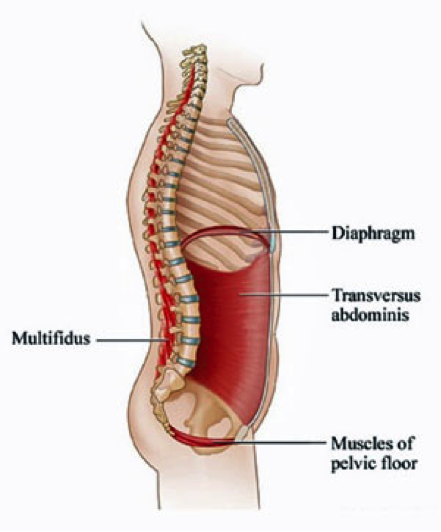
However, we also expanded this to explain that when we look at the core as the center of functional movement (sprinting, kicking, jumping, swinging a tennis racket, whatever), it must be expanded out to include the outer unit muscles around the torso and hips. And indeed this is the approach taken to the core by many athletic coaches and texts these days. In other words, we must start thinking of the core as multi-layered and multi-faceted, where we have;
- An inner unit of core musculature, that is responsible for stability and integrity of the lower back and hip region (what you will see referred to as the ‘lumbo-pelvic region’ when more technical terms are used.) So these muscles as shown in the diagram, arent responsible for any sort of movement, but rather provide stability, in order to allow quality movement without the risk of injury
- The outer unit of muscles around the mid-section (internal and external obliques, rectus abdominus, quadratus lumborum – don’t worry about the names, just look at where they are on a diagram) as well as the musculature associated with the trunk and hips.
Once we throw in the trunk and hips, we are adding in a whole multitude of muscles, and so will not list them all, but rather simply provide images here of various movements that link all these together, as a functional unit of ‘core muscles.’
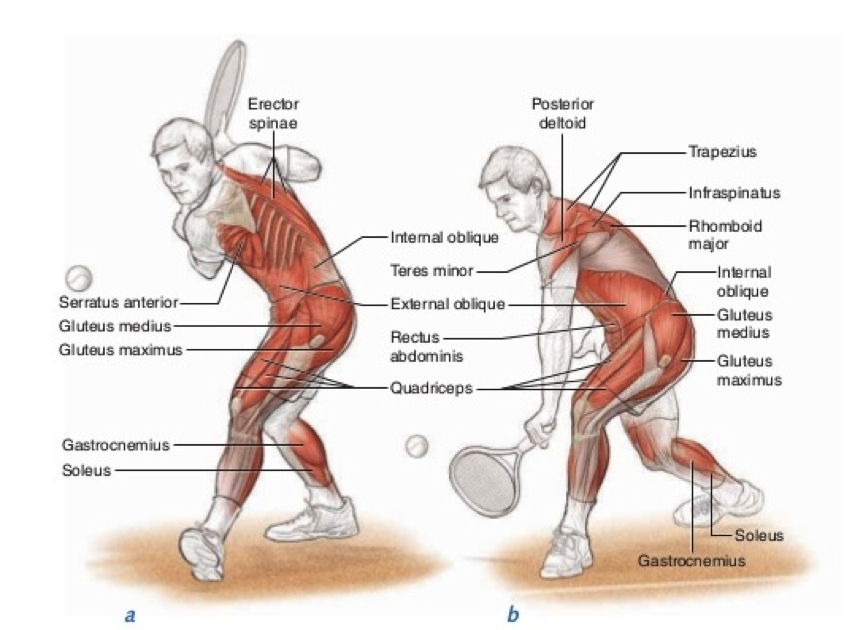
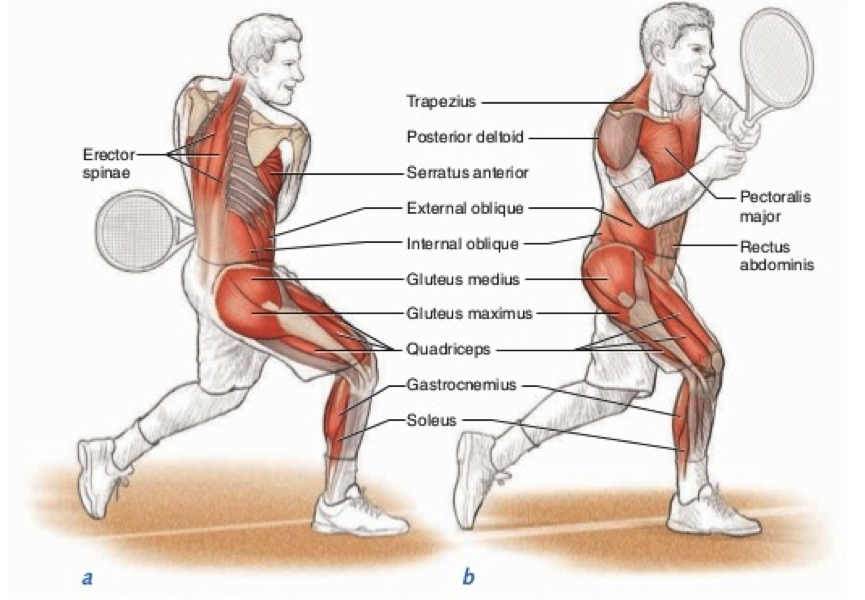
Sorry about all the tennis diagrams, but these were the best available pictures to demonstrate the mid-section being integrated out with other attached muscles, and then being integrated further out with the arms and legs. All movement and power moves outward from the core. So with the pictures, take note of this integration, and focus largely on the mid-section, and the way the other muscles overlap with it.
So it is important to think of the core as first, the inner unit stabilisers of the lower back, and then secondly as the center of functional movements once we move to the outer layers, and link in together with the hips and torso.
Once we acknowledge this, we must then train it in such a way. But how exactly?
First, you would look to train the inner unit core muscles with exercises that specifically target and isolate them, with things like forward ball rolls, and 4-point style exercises. These exercises train the inner unit specifically, and whilst very low impact (and lets be honest, they are boring), they are essential in training integrity and stability around the lower back. Such exercises can either be done on their own (a great time to do such work is during the transition phase of the off season) or together with other compound style exercises in supersets. This is a great time efficient way of training, and allows you to maintain this inner unit activation even during the season, when you would otherwise be more time poor.
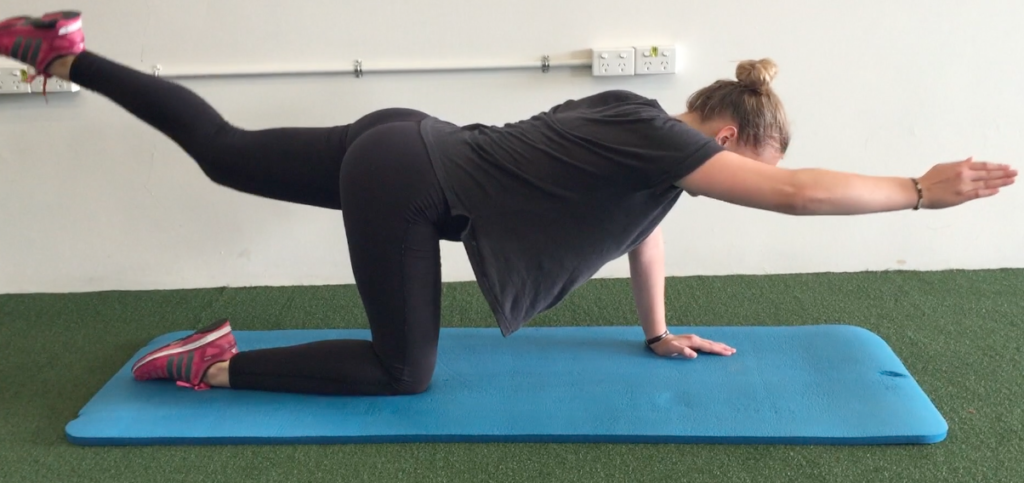
You then look to translate this inner unit activation to progressively more upright postures, translating the core strength from the floor, to core strength in positions that you would be required to perform in games. Because believe it or not, just because you have fantastic core activation and strength on the floor, does not mean that you automatically have the same core strength standing and in other positions. This is because core strength in position specific. You could be an absolute superstar on the floor, but then fail to fully activate the core in an upright position. So progressing this inner unit strength, to more compound, functional and upright movements such as bent over rows and standing cable presses are an example of what I am talking about here, where you not only challenge the inner unit in progressively more upright positions, but also integrate this activation with outer unit muscles of the trunk and hips.
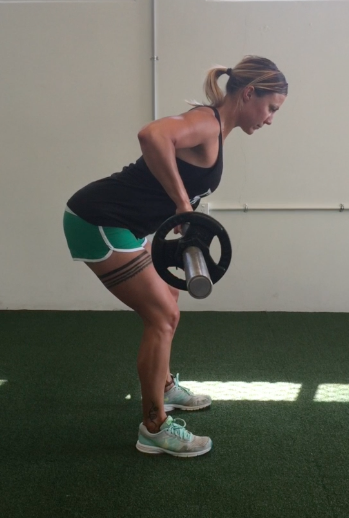
The final part, which in truth already has been done with the standing cable press and the bent over rows, is full integration with the muscles of the trunk and hips. This is done with all the functional compound exercises that we have talked about both in the articles and also the books. Classic examples are the front squat, deadlift and our personal favourites the woodchop variations, where you take your more isolated core work, and now make it work in patterns with other muscles, just as it must in game situations.
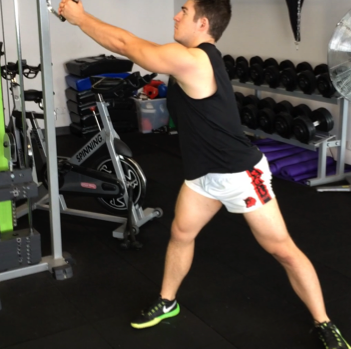
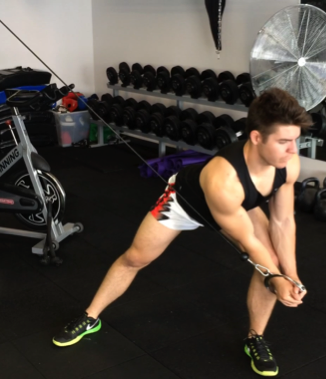
As mentioned, these final stage integrated compound exercises would already be very familiar to you if you have read many of the articles, and especially if you have read Functional Strength Training for Australian Rules Football. However, a little more understanding of what exactly constitutes the core specifically was still required, as questions about core training are a common one in our inbox.
Core training is important, and so is keeping it functional. This is good news, because functionality also means less time spent – by that I mean you are doing your core work when you are also training the outer unit (woodchops, front squats, etc.) However don’t forget that some additional supplementary more isolated work is also beneficial, and as mentioned earlier, the ideal time to do this is during the transition phase of the off season when you are giving your body a break, as well as some maintenance by super-setting with compound exercises consistently during the year.
Strength Coach

